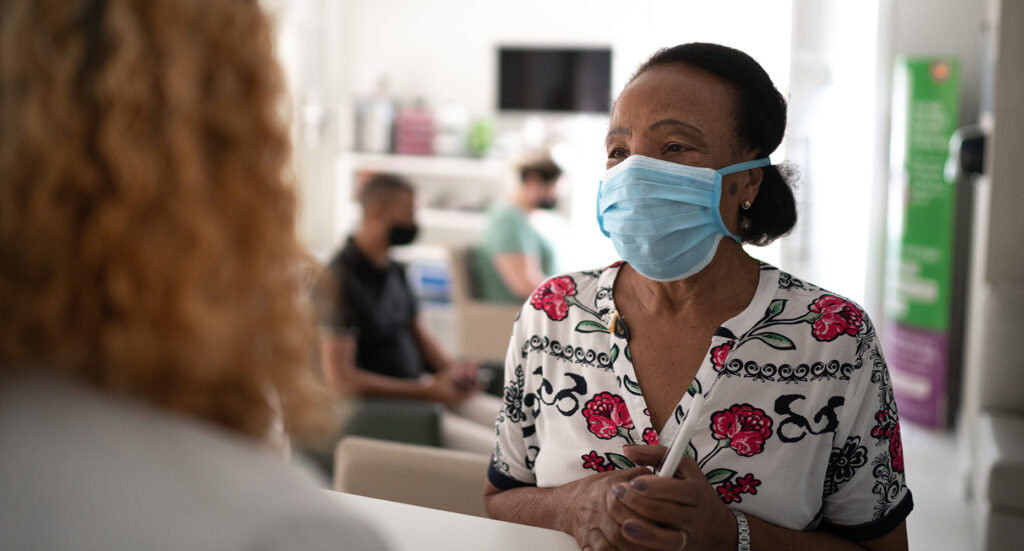Celebrating Community Health Centers: Healthcare Heroes for the Underserved
Community health centers (CHC) are a vital part of our healthcare infrastructure, providing a safety net for many at-risk patients. Although those unfamiliar with the CHC model sometimes view these centers as lower-quality healthcare providers, just the opposite is true.


Celebrating Community Health Centers:
Healthcare Heroes for the Underserved
August 10, 2021
.
Community health centers (CHC) are a vital part of our healthcare infrastructure, providing a safety net for many at-risk patients. Although those unfamiliar with the CHC model sometimes view these centers as lower-quality healthcare providers, just the opposite is true.
A Look Back
According to the National Association of Community Health Centers (NACHC), the modern notion of community health centers emerged as part of President Lyndon Johnson’s “War on Poverty” movement. However, long before that era, neighborhood centers of health had sprung up around the country. Tulane University Professor John Duffy points to the 1914 establishment of Health District 1 in New York City as one of the early examples of a community-based public health initiative.1 Championed by Dr. Sigismund S. Goldwater, the self-contained district served 21 blocks and 35,000 people in the Lower East Side section of Manhattan.
Dr. Goldwater was a public health proponent and an innovator. Upon his appointment as health commissioner for New York City he formed a citizens advisory council and established a Bureau of Public Health Education. Through the District 1 program resident health data were gathered and monitored. When disease or health issues were identified, nurses were assigned to the family to oversee interventions. The success of this experiment spawned similar programs in New York.
Decades later, in conjunction with the civil rights movement of the 1960s, the Office of Economic Opportunity established what were termed “neighborhood health centers.” These centers were envisioned as central points of contact for health and social services in areas with medically underserved populations. The first funded community health center opened in 1965 in Boston, serving an impoverished neighborhood from a public housing basement.2 It still operates today as the Geiger Gibson Community Health Center.

The Fundamentals
In 2018 there were 1,362 federally funded health center organizations representing 11,744 urban and rural service delivery sites spanning the United States (including the District of Columbia, Hawaii, Alaska and Puerto Rico).3 The number of sites represented a nearly 62% growth from 2008.3
These non-profit health centers are required by law to serve communities suffering from a shortage of medical services due to poverty, health risks, or a lack of healthcare providers. To maintain funding eligibility centers must also offer comprehensive primary care, and adjust fees on a sliding scale based on a patient’s ability to pay. The centers are led by community boards that include their own patients.
Within America’s most challenged neighborhoods, CHCs are pivotal sources of healthcare and health education. They offer a spectrum of services ranging from preventive medicine to disease management, along with ancillary services such as mental health and dental care. Some even provide vision care and pharmacies. Because they are located within neighborhoods, they offer easy access to care, which helps patients overcome transportation issues.

The Patients
It’s no surprise that approximately 82% of patients using CHCs are uninsured or publicly insured.3 In recent years, the majority of patients were insured by Medicaid, while a quarter of patients were uninsured.3 In addition, the NHCHC reports that in 2018 the vast majority of patients fell below the poverty level.3 The CHC patient population is also diverse. Nationally in 2018, more than 60% of patients were members of racial/ethnic minority groups.3
Access to care is very important to neighborhoods served by CHCs. According to the Kaiser Family Foundation, poverty is a factor when it comes to health and quality of life. Furthermore, persons belonging to minority groups are often at the short end of the “health equity” equation due to discrimination, occupation, income, and housing.4
In recent years, CHCs have experienced growth in the numbers of patients with complex conditions, including obesity, COPD, substance abuse, and others.3 In addition, they are seeing increases in the number of older patients seeking care.3 The availability of quality healthcare in a non-intimidating setting is important to identifying and managing disease among the disenfranchised. If left untreated, the diseases will most likely progress, leading to consequences for patients and further burdening the healthcare system.
Balancing the Health Equity Scale
Of course, the overall value of community health centers is a function of the quality of care provided. After all, health equity can only be achieved as health disparities are reduced. Fortunately, there is evidence that CHCs are making progress in this area.
According to the Health Resources and Services Administration (HRSA), 68% of CHC patients with diabetes are controlling their blood sugar, and 65% of health center patients are controlling their hypertension. In both cases, these outcomes exceed the national averages!5
This is particularly impressive given the higher-risk profile of CHC patients. HRSA also attributes reduction in the use of emergency departments and hospitals to the availability of community care.5 And NHCHC notes that many of its centers exceeded Healthy People 2020 Goals, which represented the nation’s goals and objectives for health promotion and disease prevention between 2010 and 2020.3
Behind the success of community health centers are the approximately 250,000 providers and staff members serving patients.5 The care provided in centers has evolved over time. While primary care still represented the majority of visits in 2016, dental and mental health services have experienced growth.6
The mix of providers includes physicians, a large contingent of nurse practitioners, physician assistants and nurses, and other medical staff, dental staff professionals and personnel providing substance abuse and mental health services.3 The National Health Service Corps is a key source of staffing.
The Challenge Ahead
Despite past achievements and popularity with patients, the environment remains challenging for community-based health. The fact remains that payments from third-party payers are lower than costs. Funding issues and ongoing uncertainty in regard to state policies for Medicaid expansion further complicate the situation.3 In addition, the possibility of staff shortages and lack of insurance for some patients lead to concerns of reduced access to care.
Nevertheless, the demonstrated progress in changing health patterns among the most vulnerable populations and reducing healthcare system costs positions CHCs as crucial providers of value-driven healthcare.
For more information on community health in the United States visit:
The National Association of Community Health Centers
Health Center Program Impact and Growth
The National Health Service Corp
Footnotes:
1 Duffy, John. The Sanitarians: A History of American Public Health. University of Illinois Press, 1992, pp. 214-215.
2 Taylor, Jessamy. “The Fundamentals of Community Health Centers.” National Health Policy Forum, 31 Aug. 2004.
3 Community Center Chartbook 2020. National Association of Community Health Centers, Jan. 2020.
4 Ndugga, Nambi and Artiga, Samantha. Disparities in Health and Health Care: Five Key Questions and Answers. Kaiser Family Foundation. 11 May 2021.
https://www.kff.org/racial-equity-and-health-policy/issue-brief/disparities-in-health-and-health-care-5-key-question-and-answers/.
5 “Health Center Program Impact and Growth.” HRSA, Date last reviewed Dec. 2020, https://bphc.hrsa.gov/about/healthcenterprogram.
6 Rosenbaum, Sara, et al. Community Health Centers: Growing Importance in a Changing Health Care System. Kaiser Family Foundation. 9 Mar. 2018.
https://www.kff.org/medicaid/issue-brief/community-health-centers-growing-importance-in-a-changing-health-care-system/.
Related Articles
Introducing the HemoCue Customer Portal